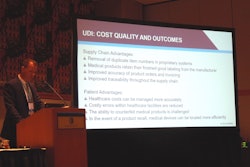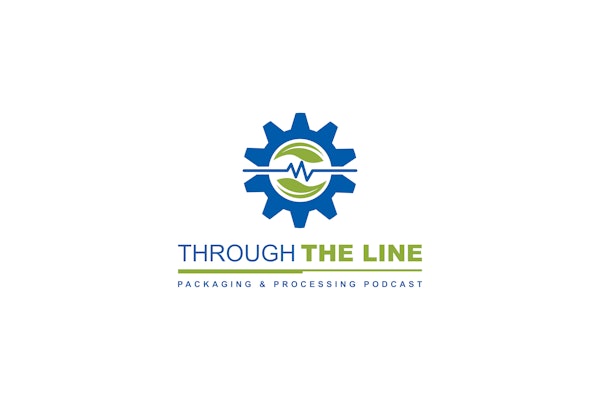“If a label falls off or is damaged on a case, we will treat that case as damaged. If it’s just one case, we’ll attempt to receive [it] at the until level, but if there is damage to multiple cases, we will return the entire batch of product in which we have labeling issues.”
The above statements by Matt Sample, Director of Supply Chain, AmerisourceBergen, emphasize the importance of labeling. Before your drug or medicine reaches the consumer, it has to get to the distributor—and as Sample’s notice above demonstrates, distributors have rules about accepting product—and the need for a label on each case.
In the world of serialization and aggregation, we worry about our printing equipment. We spend time looking at lasers, focusing on our thermal inkjet codes, etc. We holistically look at the production line and anticipate vibration, “laserability” of a carton, and drift on a pressure-sensitive label.
Yet when it comes to the actual label on cartons, bundles or pallets, we allow someone in procurement to acquire the cheapest possible label. We don’t anticipate the impact of cold chain storage on the adhesive or the moisture content that corrugated board can pick up in cold packing, and we don’t pay much attention to the time it takes for a label to truly setup and take hold.
Taking a holistic view
We need to take a holistic view of the label and consider what that case label is applied to, what happens after the label is applied, where potential label failures could occur, and what impact it could have after the print.
Labels are made up of an adhesive and a label itself. Adhesives are not created equal. There are acrylic adhesives, rubber adhesives, and some vendors have begun manufacturing proprietary adhesives that can be a hybrid of both or fall outside of those two materials completely.
Some adhesives are better for cold storage or cold packaging. Some are better for use on difficult to adhere substrates, like smooth films, in which there is nothing for the label to adhere to.
In the case of the actual label, there can be direct thermal labels or labels for use with thermal-transfer (think ribbon)-style printers. The point is that not all applications are created equal. So why should we treat all labels as if they are, and why should you settle for the cheap label to save 2/10ths of a penny, when, as Matt Sample articulated above, an entire pallet could be accepted or rejected based on the savings of what amounts to a quarter per pallet?
Not MY labels!
I spoke with a few manufacturers of print-and-apply case labels to figure out if I was making a mountain out of a molehill. I hoped that with all the time and effort… and MONEY… that pharmaceutical companies put into compliance, they wouldn’t let their hopes of accepted pallets ride on a cheap label.
The hope was that manufacturers would ask what label they need based on their product and storage requirements. Unfortunately, most just want a cheap label.
For those who don’t think their environment could have an effect on the labeling, take into consideration that cold corrugated boxes retain moisture. As they come up to a higher temperature they can retain moisture a bit. That can cause your label to not completely adhere. Then, during transportation as the moist box gets to a lower temperature, the box firms back up, but without solid label adhesion, potentially causing the partially adhered label to fall off.
The thing is, in the manufacturing world, be it pharmaceutical with serialization or beverage packaging, the label isn’t something over which engineers have control. The label isn’t validated. The person in charge of sourcing the label—never the serialization engineer who helped install an entire production line that costs six or seven figures—doesn’t take into account that two bad labels totaling 15 cents falling off a box can make that entire million-dollar production line fail. That isn’t their fault—they just haven’t looked at the entire process before because they hadn’t needed to. Until now!
So, what should we do?
You, as manufacturers, should talk. We, as suppliers, should listen.
Consider the following environmental variables:
• Dust in the environment
• Fluctuations in temperature
• Time that the label has to adhere to the carton, case, or shrink wrap
Those are three examples of the environment being able to impact the adhesion of a label. Look at a production line holistically. Take pictures and videos, measure vibration, and see what fits. Figure out what label is best for your product by having a conversation. Answer a few easy questions. Determine if there’s a “gotcha” moment somewhere in that case or pallet label’s lifecycle that could be a point of failure.
Is it really important? I mean—it’s a label. Let’s ask Matt Sample again. He notes, “As of November 2018, the homogenous case label is a regulated label… I have to treat it like an individual unit. I can’t change that label, reaffix it, etc… I strongly encourage all manufacturers to include the case label as part of their normal quality review/approval processes.”
Without question, the quality and adhesion of the label is important. Your customer says so!
Read Part I of this series from Domino’s Paul Hammond, which addressed issues pertaining to the color fastness of CIJ ink.





















